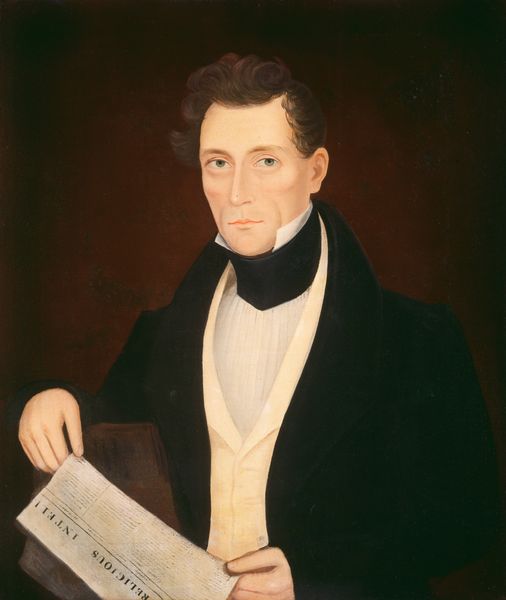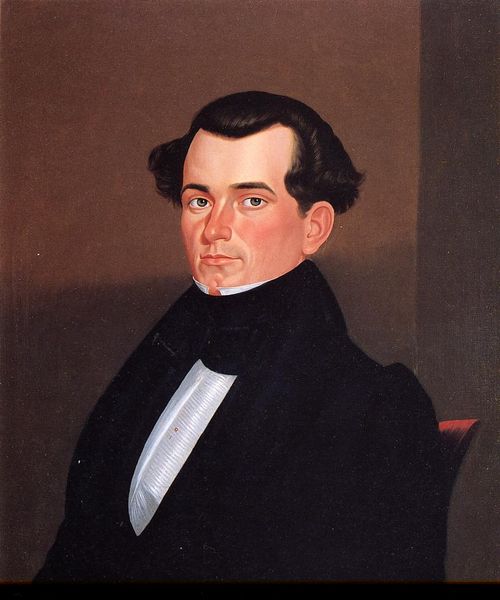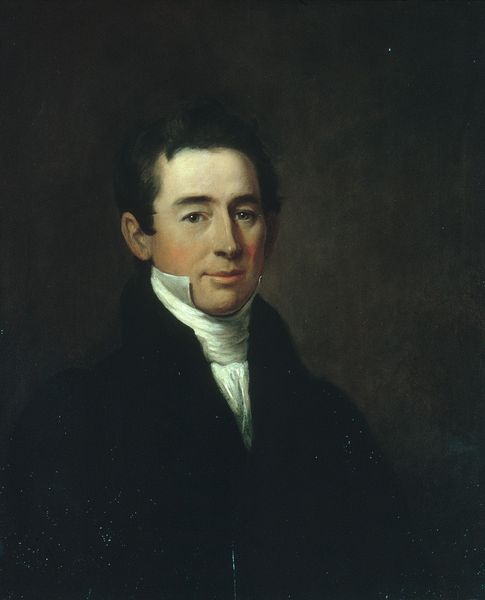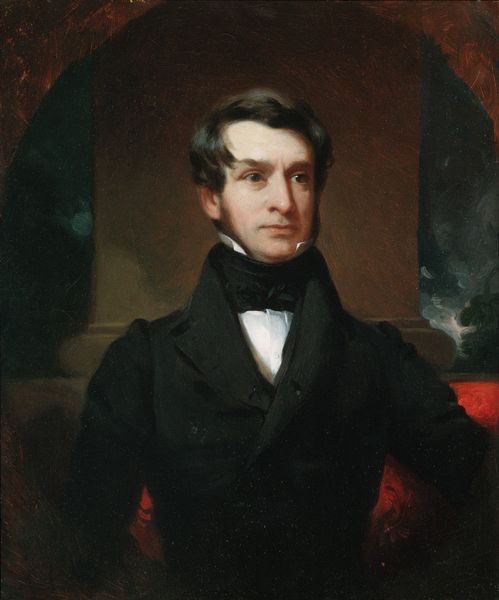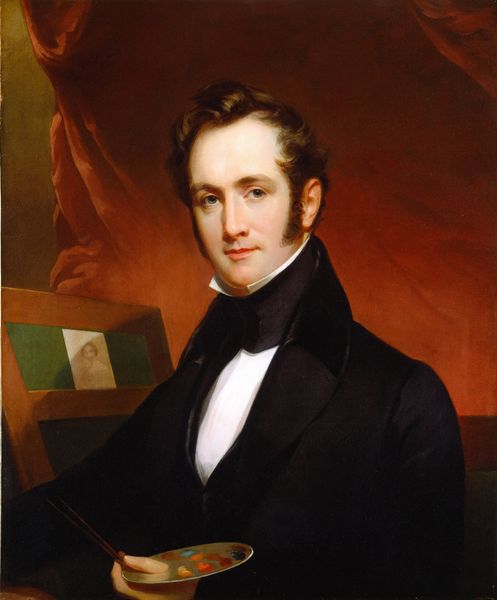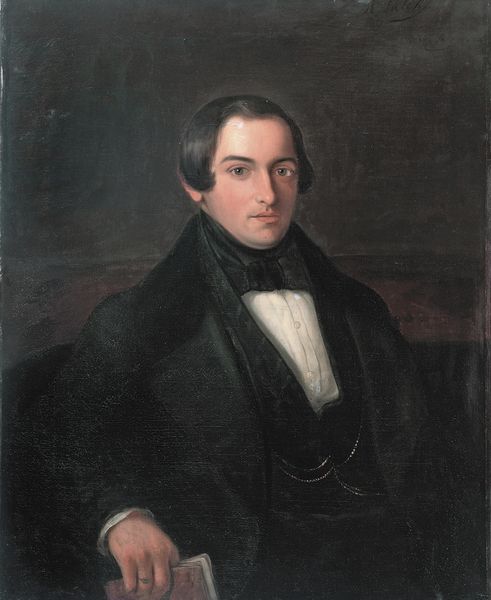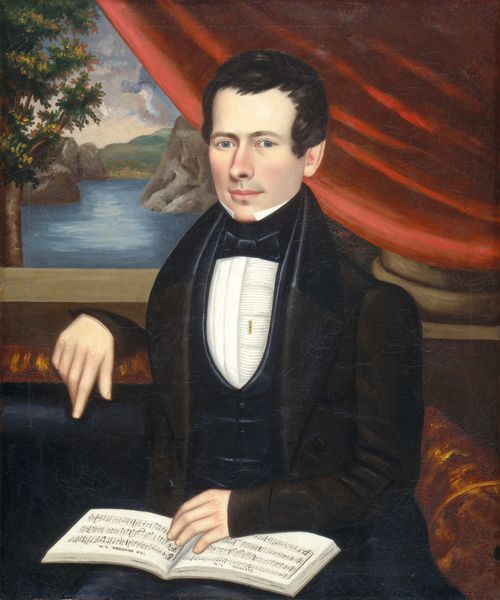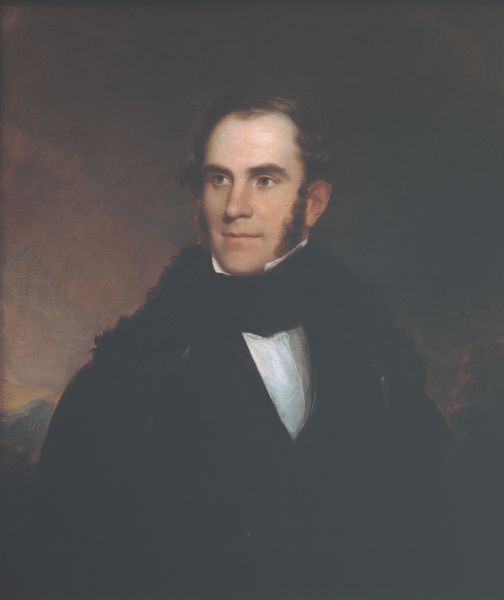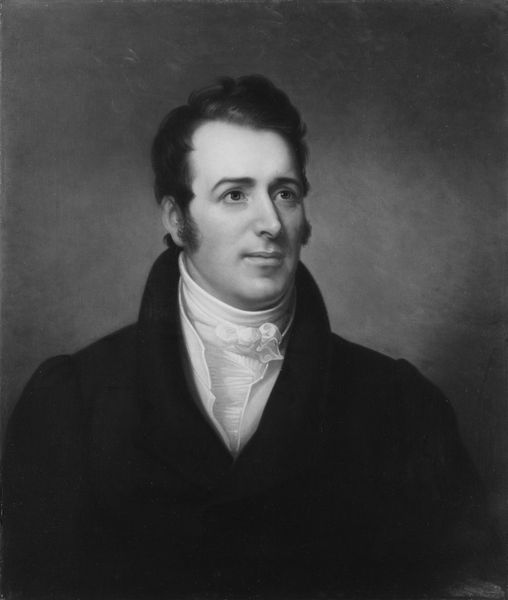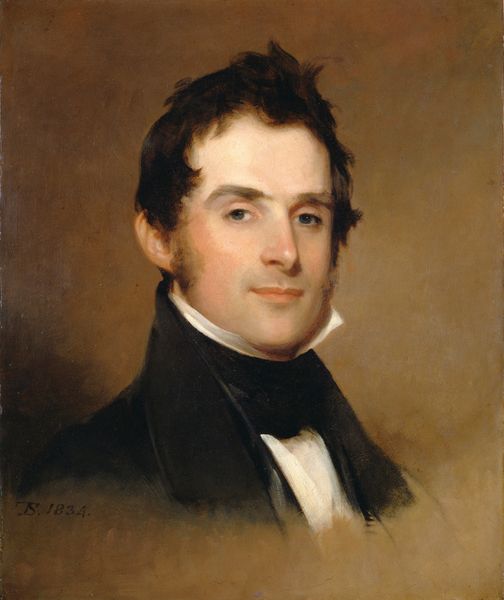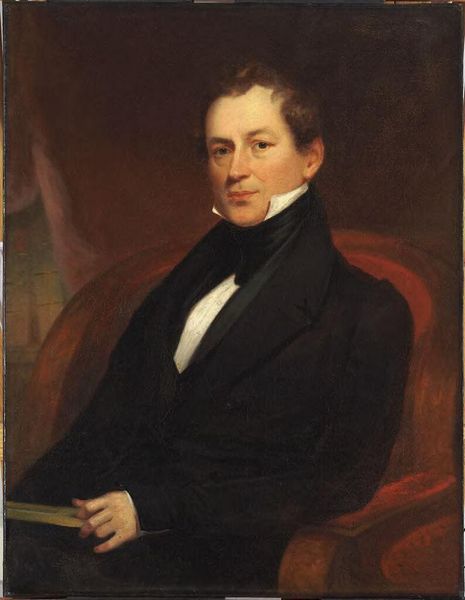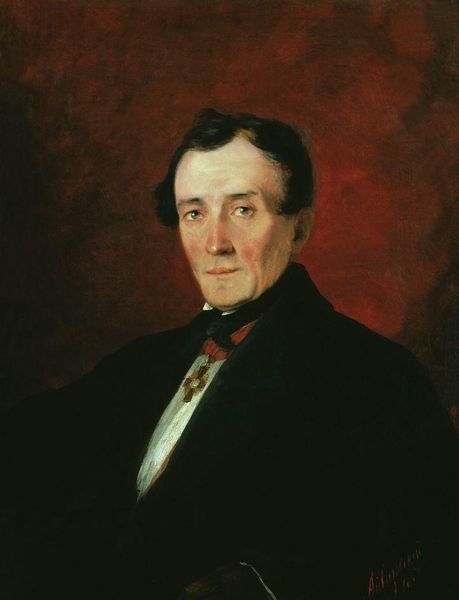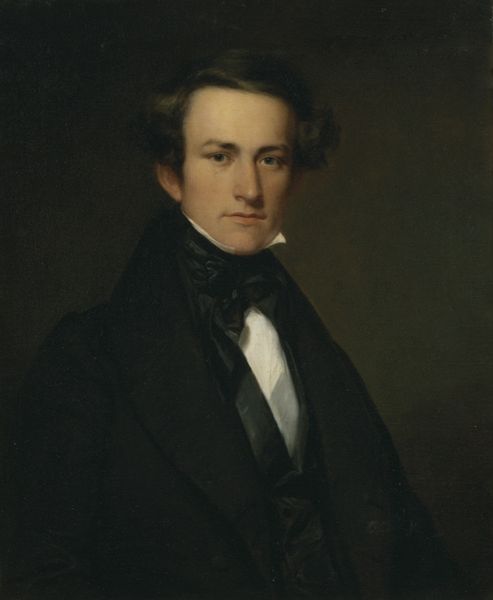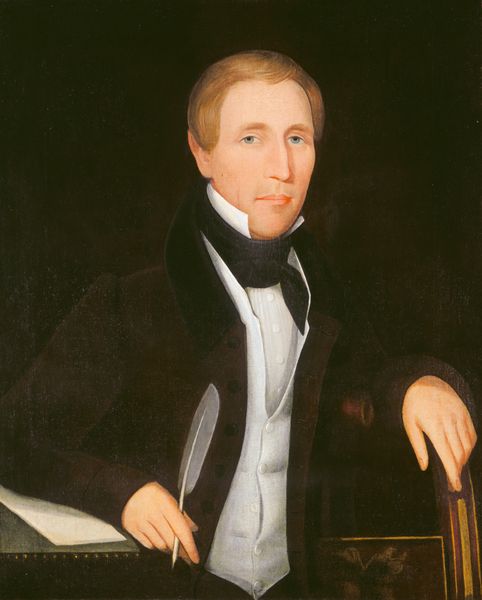
painting, oil-paint
#
portrait
#
painting
#
oil-paint
#
romanticism
#
portrait drawing
#
academic-art
#
portrait art
#
realism
Copyright: Public domain
Curator: Looking at Paul Kane's 1836 oil painting, "Freeman Schermerhorn Clench," I’m immediately struck by the subject's piercing blue eyes and the rather severe formality of his attire. Editor: Formality indeed. The portrait screams ambition and constraint, all wrapped up in that severe black coat. But there's also something… almost melancholic about his gaze, wouldn’t you say? Curator: Perhaps. I see that too. This was painted at a time when portraiture served less as a personal keepsake and more as a declaration of social standing. Notice how every detail, from the starched collar to the meticulously rendered coat, projects an image of respectability and…dare I say it...power? Editor: Precisely. But the interesting thing here is to consider what sort of 'power' a painting like this could exude in 1836. This was an era of rapidly expanding capitalism, burgeoning civic institutions, and intense class consciousness. Kane's painting doesn’t just capture a likeness, but performs an act of social positioning for his subject. Curator: It is intriguing. And the brown background sort of throws forward Mr. Clench. What's even more curious is that sliver of what appears to be a chair. You wouldn't think a Victorian era male portrait to highlight, but to make rather hidden the setting he occupies. A subtle, subconscious suggestion that his position is also a tad "uncomfortable"? Editor: That chair fragment is very insightful. Maybe, just maybe, it's a gentle rebellion against the strictures of the era. Perhaps an admission that even men like Clench are bound by social conventions? The art hides the context, yes, but only shows what is meant to be seen: the appearance and aspirations that were beginning to mean social climbing and economical profit, or success, rather than social recognition. Curator: Food for thought indeed. What strikes me still is Kane’s skill in capturing a human likeness. The brushstrokes are almost invisible, allowing Clench's face to dominate, and the portrait to take on a life on its own... Editor: Right. It’s more than just verisimilitude; it's an exercise in controlling public image through a highly calculated aesthetic. Curator: An image of great impact indeed, making this encounter with Mr. Clench so intriguing. Editor: Absolutely. A revealing slice of history cleverly concealed within an artwork, a moment brought to light!
Comments
No comments
Be the first to comment and join the conversation on the ultimate creative platform.
